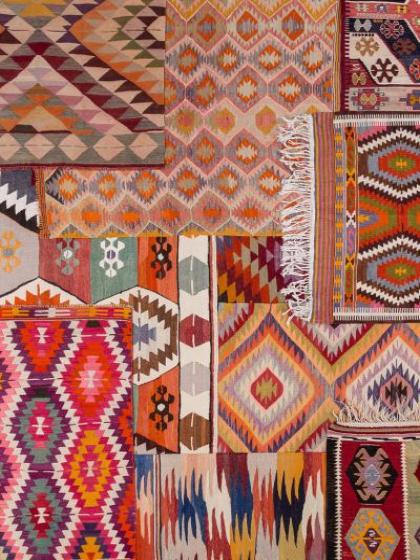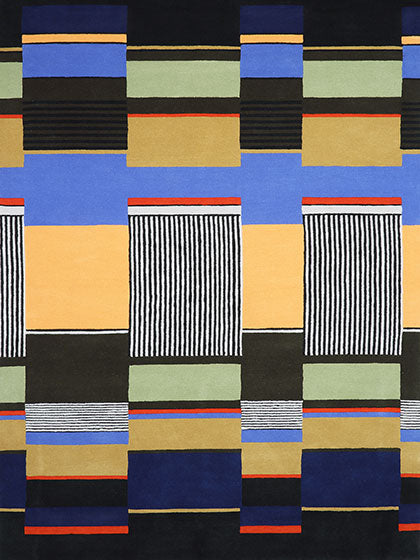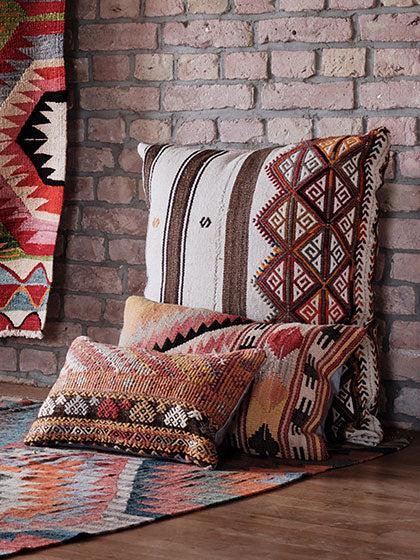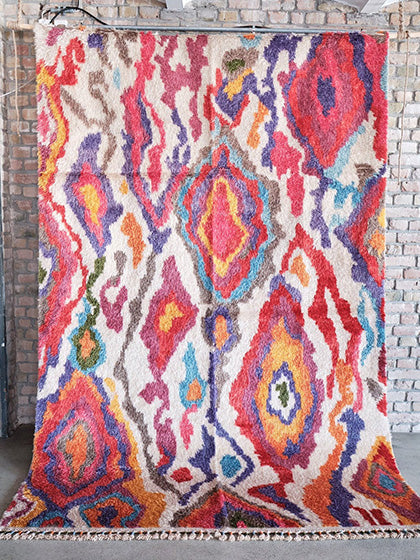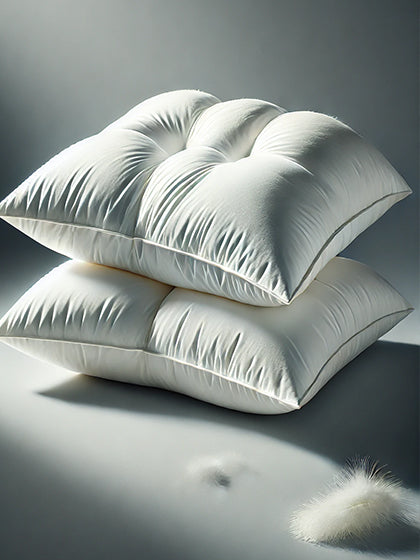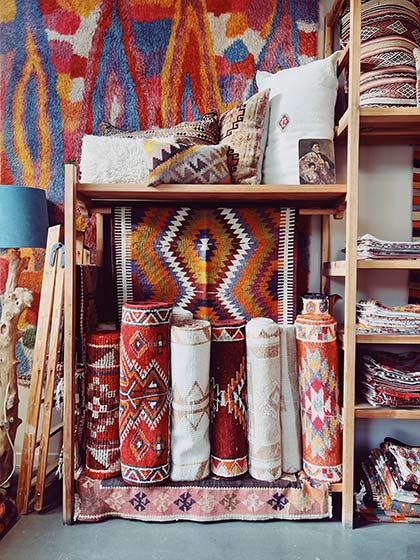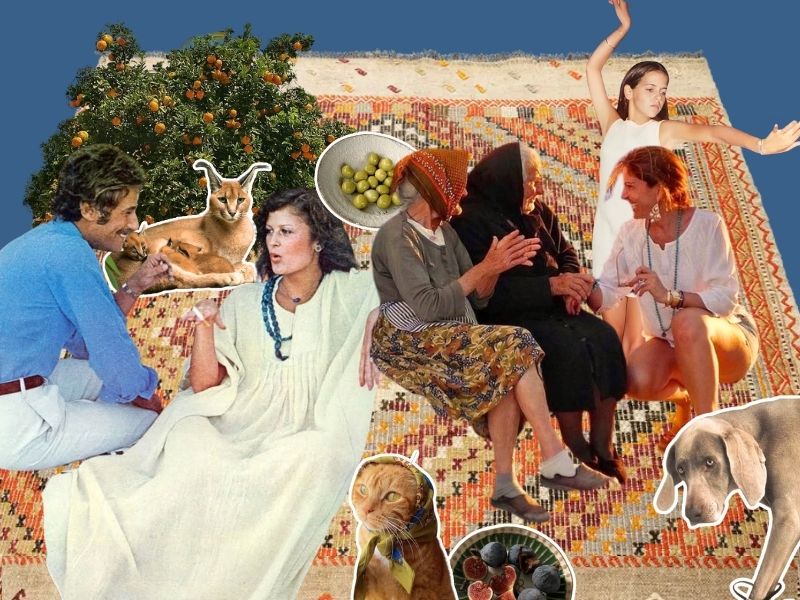Some rooms shine. Others glow.
Not because they are perfect – but because they carry lived stories.
Because they preserve a scent, a sound, a feeling.
Shambolism is the name for what many of us have been doing intuitively for a long time:
create a space that doesn’t look made – but grown.
It can't be explained – but it feels right.
It's not a trend.
It is a return.
Beyond concept & catalog
Shambolism is the opposite of "finished." It defies the notion that a home needs a clear line. Instead, shambolism allows contradictions to touch each other:
A vintage kilim on a concrete floor. An heirloom next to a piece of street art. A disco lamp under a wooden beam. Delicate, raw, fragile things side by side. Not in competition. In coexistence.
The result is a space that doesn't decorate, but rather weaves. A space that doesn't seek to please, but rather tells a story.

The kilim as an anchor in this lived chaos
A handwoven kilim is like a heartbeat on the ground. It brings not just color or pattern—but also anchorage, memory, and symbolism.
Our kilims come from Anatolian regions, woven by women who have connected not only wool but also phases of life. Their patterns are not ornaments. They are symbols: for protection, for connection, for fertility, for change.
A kilim in a shambolic home is not an accessory, but a counterpart.
Related styles: Wabi-Sabi, Boho, Maximalism
What connects Shambolism with other styles is the desire to create spaces that are personal, authentic, and imperfect. The Japanese philosophy of Wabi-Sabi, for example, teaches us to recognize beauty in imperfection. It, too, is about patina, simplicity, and things with history.
The boho style, on the other hand, thrives on the freedom to intuitively mix styles, cultures, and colors. It often looks randomly arranged—but each piece carries meaning. Just like with Shambolism, the space is never "finished," but always in flux.
Maximalism celebrates opulence, color, and diversity. Here, everything can coexist: art, patterns, memories, craftsmanship, kitsch. This style also prioritizes personality over concept. What's important isn't that everything fits together—it's that it all works together.

Shambolism in the Wild Heart Free Soul Community
A home, in the sense of Shambolism, reflects not just taste—but life. It shows not what you own, but what you believe in. What's important to you. Where you come from. And where you want to go.
It can appear cluttered or almost empty, colorful or earthy, wild or calm—as long as it feels authentic. Because it's not based on design rules, but on intuition.
In the Wild Heart Free Soul Kilim Community we see exactly that:
- Kilims on old wooden floorboards.
- Wall hangings next to children's drawings.
- Finds from all over the world.
- Improvised corners full of life.
Everything lovingly put together, never perfect, but full of meaning.
These rooms breathe.

Shambolism in real life – Kilims at our customers
And you?
How does your kilim live with you?
What is your shambolism?
For our next post we are looking for new Kilim Homestories .
Not staged – but honest.
🧡 Send us:
-
1–3 photos of your favorite place with WHFS kilim
-
a few personal words about this place and Kilim
-
by email ( selam @wildheartfreesoul.com ) or Instagram DM (@wildheartfreesoulberlin)
We look forward to spaces that can breathe.
On corners that may be a little crooked – but are full of soul.

Shambolisms is memory in motion
It is not made for the eye, but for the heart.
A home in the sense of shambolism doesn't sound like "finished," but rather like: continuing to grow, staying, remembering.
And perhaps there is a kilim waiting for you in our current collection.

